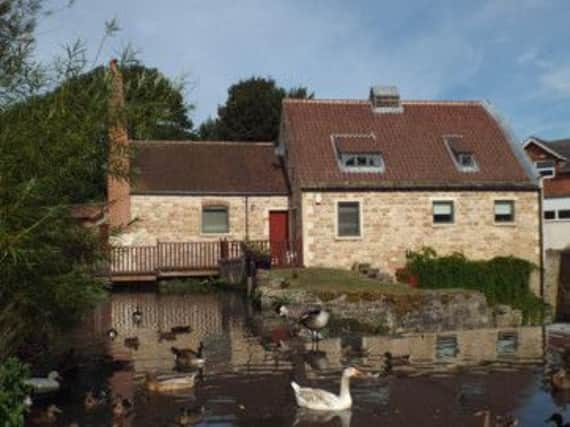Volunteers needed to help make history


Next time you are out and about in parts of Derbyshire such as Pleasley and Shirebrook or Nottinghamshire such as Mansfield Woodhouse take a good look.
The beautiful old red-roofed limestone cottages and farmhouses you will see were built using Magnesian limestone.
Advertisement
Hide AdAdvertisement
Hide AdThe stone was deposited about 260 million years ago in the ancient Zechstein Sea, which extended from Poland to North East Derbyshire and North Nottinghamshire.
And right now the distinctive buildings - many of which are not listed by English Heritage - are being mapped by volunteer residents to see them looked after and celebrated.
A June workshop in Pleasley showing participants how to photograph and record the buildings for an online interactive map is now to be rolled out for residents in the parishes of Glapwell and Ault Hucknall.
Emma Hancock, project manager for the Limestone Journeys’ project Your Hidden Heritage, said: “This is a very exciting project because these are local buildings, built using local methods and local materials.
Advertisement
Hide AdAdvertisement
Hide Ad“They are very special to the local area and have never been recorded on this scale before.
“Many of the structures we will be recording are not listed by English Heritage - many of them are houses and farm buildings.”
Training participants take part in a recording field trip during which they assess structures according to set guidelines, such as materials used, basic condition and local importance.
The results are now being added to a website with photos taken on the day, which the public can then view when it is up and running later this year.
Advertisement
Hide AdAdvertisement
Hide AdSaid Emma: “After the training at Pleasley we had people going back out into the field to do their own recording - people can do it at their own leisure and submit recordings online.
“Derbyshire Environmental Studies Service have also been working with schools to get young people involved.
“We already have had kids pointing out the architectural features of Bolsover shops and will be visiting schools near Nether Langwith for more recording.”
The Heritage Lottery-funded project, runs until April next year but will be very much dependent on resident volunteers to complete its mapping of the area’s Magnesian limestone architecture.
Advertisement
Hide AdAdvertisement
Hide AdTo this end, Emma is hoping a suitable person or group of people will step forward to take over the resource and continue to update the project’s recordings when the project comes to an end.
“This resource will be available for local people to look at or study as part of their university or college research, for example.
“The Heritage Conservation Manager at Bolsover District Council has also been involved from the start to ensure the records are useful for them.
“For example, when looking at which outbuildings need to be protected or when informing planning decisions.”
Advertisement
Hide AdAdvertisement
Hide AdIf you would like to get involved the project will be running two workshops in September from the Doe Lea Centre, Doe Lea.
The session for recording in Glapwell will run on Saturday 20th between 10am-4pm, while the Ault Hucknall Parish workshop will run on Sunday 21st between 10am-4pm.
Travel to recording sites is provided and both sessions are free.
To book a place email [email protected] or phone 0115 896 7409.